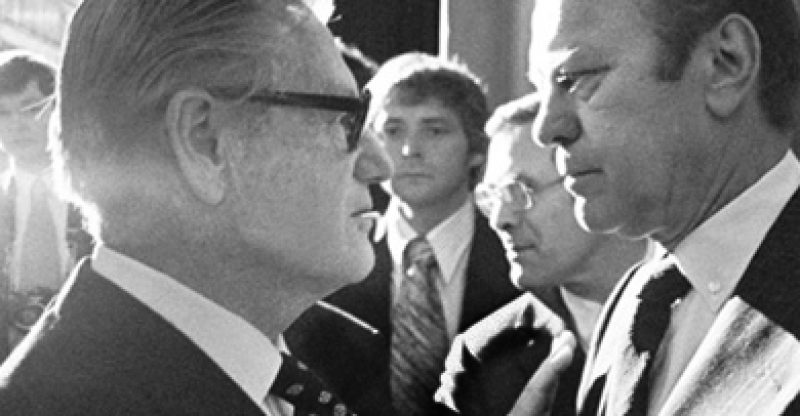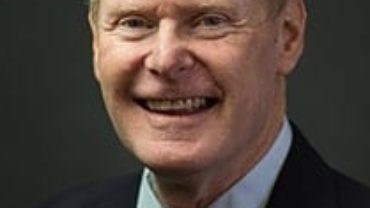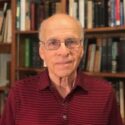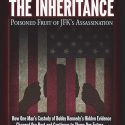Allegations regarding “Butch” Merritt, Watergate, Intelligence Agencies and “Crimson Rose,” Vol. XIV
Endgame – Part One
Written (and first posted) by Kris Millegan, April 1, 2011
Ever since I was a kid. After all, when you think of what I had, what else was there to aspire to? – Nelson Rockefeller, January 1964
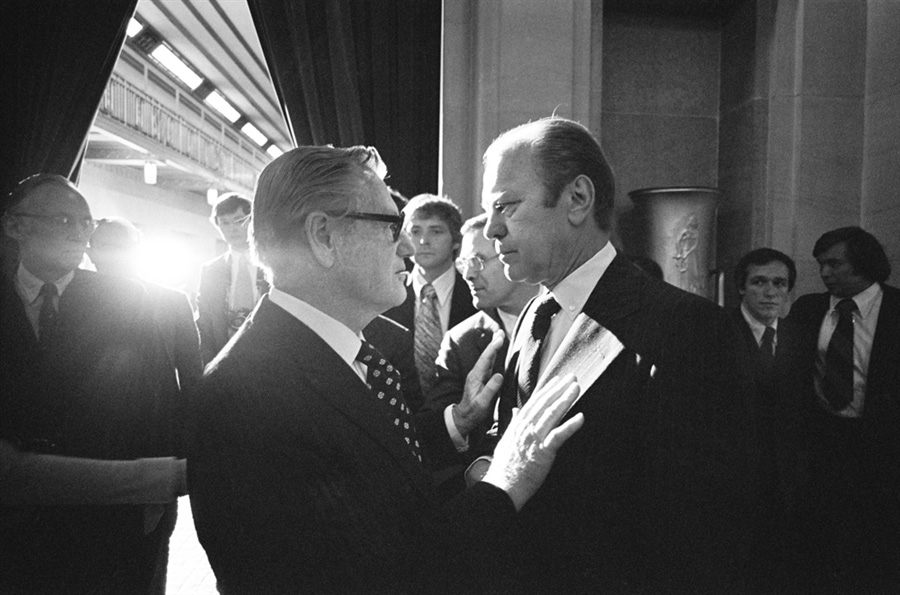
Just how close did Nelson get to his aspiration? A heartbeat away … as the saying goes.
And he didn’t even have to get elected? He was appointed, because of the 25th Amendment of the US Constitution, which had been approved some seven years earlier in 1967. Introduced as a bill by Indiana’s freshman senator, Birch Bayh (who voted against confirming Nelson for veep), the legislation passed with Nelson’s “silent” help:
“… I asked that a comprehensive proposal by New York’s Governor Nelson Rockefeller be included in the record. Even though this proposal represented a distinct departure from our consensus, I had some regrets that it had to be presented in writing, not in person. The Governor would have been a glamorous witness, bringing to our hearings much of the press attention that I felt we needed to keep our work before the public eye. Earlier, Ken Keating, as a senator from New York, had approached me to suggest that his governor testify in person, as he was eminently qualified to do so since he and his staff had given long and deep study to the problems of disability and succession” – Birch Bayh, One Heartbeat Away, 1968
After divorcing his wife in 1962, Nelson endured the sniping that appeared to keep his presidential hopes beyond his reach. For years he vacillated from running, to not running. In 1968, after saying he wouldn’t seek the election (and upsetting his main supporter Agnew), Nelson finally decides to run, bypassing the primaries for a direct run at the convention. He failed.
With all his money and charm, maybe there was another way. Nelson and his family had been involved with psyops for years.
From George Michael Evica’s, A Certain Arrogance:
Powerful forces had indeed come together to enlist [John Foster] Dulles as a major player in the expected dark times. In 1938, John D. Rockefeller, Jr., had offered him the direction of a “task force” that would evaluate “missionary activities throughout the world.” Given the historical connections between the Rockefeller family’s goals in investment, politics, intelligence, and evangelistic religion, the offer to John Foster Dulles was anticipatory.
The Rockefeller clan and its missionary intelligence network had emulated other powerful families, including the historic Medici. For over a thousand years the Papacy, and later the Spanish Inquisition, used the Church’s missionaries in Europe and the New World for intelligence collection. Their modern counterpart was the Rockefeller family, operating in the American West and, later, in Central and South America.
As early as 1883, the Rockefellers had “used missionaries to gather intelligence about [Native American] insurgencies in the West or to discourage them.” The growth of the Rockefellers’ wealth was exactly matched by the family’s collaboration with Christian Fundamentalist missionary action.
By 1957, the Rockefellers had decided to support the Fundamentalist revivalism of Billy Graham, whose supporters included the ostensibly liberal Protestant Henry Pitriey Van Dusen, a Rockefeller Foundation trustee and editor of Foster Dulles’ “spiritual legacy.” The Establishment Protestant churches supported Graham, hoping to enlist converts, but the Rockefellers’ allies in Fundamentalism ultimately triumphed.
Though Dulles was unable to join the Rockefeller missionary commission as its director, he did complete a part of his task, visiting Chinese General Chiang Kai-shek. Dulles assessed the Asian leader as a stalwart anti-Communist and “sincere Chinese patriot,” who was the target of unfair Communist propaganda concerning the general’s anti-democratic propensities. For Foster, the visit was the beginning of his long involvement in Sino-American politics. Dulles’ appraisal of Chiang Kai-shek was an important illustration of the Rockefeller family’s fusion of profit-seeking and Christian missionary work, Dulles maintained his relationship with Rockefeller interests throughout the rest of his life, eventually serving as chairman of the Rockefeller Foundation.
In 1937, just before his trip to China, Dulles accepted two invitations to a pair of major international gatherings later cited as catalysts for his religious “rediscovery.” John Foster was invited to attend the “Conference on Intellectual Co-operation in Paris, under League of Nations auspices … called to study the possibilities for peaceful change in a world … moving inexorably toward war.” Dulles’ negative response to this political meeting was suspicious, dovetailing too neatly with his imminent return to Godliness. The ensuing Conference on Church and State meeting in Oxford, England, had invited world-prominent clergy and secular leaders. According to one of his biographers, Dulles was most impressed “by the scope and range of the ideas the churchmen had to offer.” But it was more likely that Dulles and his backers decided to revive Foster’s dormant relation to the Divinity as a perfect tool of foreign policy and intelligence. His brother Allen’s earlier success during World War I using the same tactic may, in fact, have been Foster’s model. Acutely aware of the economic and political importance of the world conflict that was to erupt, Dulles recognized the “moral dynamism potential” of the liberal Protestant tradition.
Foster Dulles’ Epiphany: Spiritual or Political?
Dulles then supposedly experienced a religious revelation in July 1937. Yet “some [commentators] thought … the more than casual effort to demonstrate a revival of his faith reflected an attempt to give himself a more appropriate ‘image’ for church work.”
With Dulles’ longtime commitment to German and Japanese economic and industrial development, his “reasons for moving deeply into church work at this time may have been complex.” His “church work” after 1937 was, in fact, troubling to a number of observers.
Why? Both the secular Paris conference and the religious Oxford conference in 1937 had been organized by the same international elite establishment, and undoubtedly for the same purpose: to support an alliance of Western “Christian” power in opposition to the anticipated strength of the Communist East, led by the Soviet Union. Dulles’ son Avery summarized his father’s intention succinctly: “He began to be interested in using the churches [beginning in 1937] as a means … to overcome … nationalism and promote world peace.” Not to mention, of course, nurturing a supranational capitalist world order engaged in a battle to the death against Stalin’s USSR and labor organizations of any kind, anywhere. [emphasis added]
In January 1954, Jackson left his government psyops machinery in place and returned to the Luce media empire. Several close friends in covert operations and psychological warfare followed C.D. as presidential representatives, including Jackson’s immediate replacement, Nelson Rockefeller. Regardless of who held the position as White House psyops chief, C.D. Jackson had his hand on the throttle of American psychological warfare from 1954 through 1959, so frequently shuttling between his positions with Luce and Eisenhower’s administration that Jackson’s staff at Time created a party game out of his “send-offs and welcomes.” [emphasis added]
Later in 1954, Jackson wrote in support of Robert A. McClure, commander of the American Military Mission in Iran after the CIA coup. Analysts for the Agency regularly sent their reports to both the CIA and C.D. Jackson. He was able to bring his psychological warfare perspective to the United Nations in 1954 as the American delegate to the UN’s Trusteeship Committee, but it was a troubling time as he tried to make political sense of the United States’ ambiguous attitude toward colonialism.…” Jackson felt “the Western World,” outnumbered by “the swirling mass of emotionally Supercharged Africans and Asians and Arabs,” would discover that this “much-needed world forum” would finally be witness to “putting white prestige on the skids.” Notably absent from Jackson’s concern for “white prestige” was any sense of either color-free justice or the truth. Jackson was a key member of the World Trade Foundation that “intensified the movement to globalize America’s international business interests.”
In 1953, C.D. Jackson became the acknowledged founder of the Bilderberg group in the United States, with President Eisenhower still an enthusiastic working partner of the new political and economic establishment. Jackson himself attended every Bilderberg meeting until he died in 1964. With the American branch of the Bilderberg Conference established, Jackson moved to develop an “economic expansion” project fusing potent symbols with powerful trade and commerce plans: images and actions were to be combined to “counter the lure of communism.”
That project was established at the Princeton Conference for a World Economic Plan, held on May 15 and 16, 1954. Jackson shared his global vision with Allen Dulles. Jackson’s careful selection of images and words, embodied in the Princeton Conference recommendations, “became the basis for … a new world economic policy for the United States. Both the language and the actions of the trans-national corporations were created by the master of American psyops. Despite C.D. Jackson’s “crisis-mongering,” President Eisenhower realized how important propaganda was to the success of his “Foreign Economic Policy Battle plan.” The Advertising Council of America was enlisted, a ”private” Committee on Foreign Trade, Inc., was established, and through that front group Time, Inc., again commanded by Henry Luce and C.D. Jackson, “contributed expansively to [Eisenhower’s] … success.” By 1956, Eisenhower had captured significant support with his vigorous and creative word choice; Paul Hoffman praised the president, noting that ‘Semantics are important.…’’ C.D. Jackson must have beamed. If a Third World War were to happen, President Eisenhower had reportedly confided to C.D. Jackson that it would be won by American psychological operations.
Jackson continued to be called on by the president to brainstorm new intelligence ideas and operations. But those operations were frequently corrupt, and as a key agent of the US Power-elite C.D. Jackson was deeply involved in manipulating American social, educational, and cultural institutions. Just before Eisenhower called on him again to serve as the president’s Cold War/psyops expert, Jackson attended a crucial academic meeting whose agenda was damage control from seven years of CIA collaboration.
Initiated in 1950, Project Troy, surely named for the famous Trojan Horse subterfuge, had collected a group of top-drawer Harvard faculty. The project ultimately morphed into the Center for International Studies (CENIS), responsible for key analyses of the Soviet Union, China, and nuclear weapons. Because Harvard banned on-campus classified research, Troy/CENIS had to meet at MIT.
The original Cambridge group had been given a typical C.D. Jackson psy-ops directive to solve a “specific [apparently technical] problem”: How could the CIA overcome Soviet jamming of the CIA’S propaganda broadcasts to Eastern Europe? “Within one year, the Agency spent $300,000 so that CENIS could “research worldwide political, economic and social change … in the interest of the entire intelligence community.” Seven years after Troy/CENIS tackled its initial problem, a CENIS review board met to examine the difficult question of “academic integrity.”
Despite the fundamental reality that the Cambridge faculty had been bought by the CIA, the reviewers worried over “corrosion” of the academic “channel,” as if individual faculty members were somehow like mental tributaries through which classified analysis flowed into the main Agency pipeline. McGeorge Bundy, an intimate friend of the CIA who chaired the CENIS review, immediately saw the value of the metaphor. As he put it, “The channel is more important than that a lot of water should be running through it.” There could be no doubt as to whose imagery had captured the flawed ethic of the Cambridge operation. Attendee C. D. Jackson observed that American intelligence “work has got to be done.…” And, he added, “I have not noticed any visible corrosion.’’ So much for the integrity of Harvard Yard’s academic plumbing.
The program continued, and the initial intrusion of the CIA was almost immediately matched by the corruption of Harvard’s Center for International Affairs, through at least 1957. In the summer of 1955, Nelson Rockefeller called a conference on “the psychological aspects of U.S. strategy” with key psyops stars from the Operations Research Office, Johns Hopkins University, including its School of Advanced International studies; the U.S. Military Academy; the director of CENIS, housed at M.I.T.; the director of the Council on Foreign Relations’ “studies”; American air intelligence; the New England Electric System; and others, including Henry Kissinger, at the time hanging his hat at Harvard. The top U.S. psychological warfare veteran in attendance was, of course, C.D. Jackson.
Whatever moral rant John Foster Dulles was directing at that moment against Russia and China, Jackson and associates were running the American psyops show. On May 7, 1956, Jackson again met a powerhouse of “psych-war” people, including DeWitt C. Poole, A.A. Berle, Tom Braden, and Nelson Rockefeller, who were attempting to re-energize the OCB as Eisenhower was applying a brake to the government’s psychological warfare engine. Whenever possible, psyops agents had been active outside the White House and the State Department.
Through 1955-56, Allen Dulles, Frank Wisner, the CIA, C.D. Jackson and his Radio Free Europe/Radio Liberty had cooperatively stirred the bubbling European pot of anti-Soviet revolution, hoping for American establishment and intelligence support. But President Eisenhower distanced himself from the more ferocious of the Cold War/psyops crusaders; the worst of a dangerous Cold War period was coming to a close, and C.D. Jackson apparently lost some power and influence. Yet Jackson still remained a key figure in the administration’s “rollback programs, commanding the Operations Coordinating Board. [emphasis added]
Some history and to help understand the nomenclature from Wiki:
Approval of clandestine and covert operations
The Directorate of Plans (DDP) was created in 1952, taking control of the Office of Policy Coordination, a covert action group that received services from the CIA but did not go through the CIA management. The other main unit that went into the Directorate of Plans was the Office of Special Operations, which did clandestine intelligence collection (e.g., espionage) as opposed to covert action.
Approval of clandestine and covert operations came from a variety of committees, although in the early days of quasi-autonomous offices and the early DDP, there was more internal authority to approve operations. After its creation in the Truman Administration, the CIA was, at first, the financial manager for OPC and OSO, authorized to handle “unvouchered funds” by National Security Council document 4-A of December 1947, the launching of peacetime covert action operations. NSC 4-A made the Director of Central Intelligence responsible for psychological warfare, establishing at the same time the principle that covert action was an exclusively Executive Branch function.
Early autonomy of OPC
At first, the supervision by committee allowed the OPC to exercise “early use of its new covert action mandate dissatisfied officials at the Departments of State and Defense. The Department of State, believing this role too important to be left to the CIA alone and concerned that the military might create a new rival covert action office in the Pentagon, pressed to reopen the issue of where responsibility for covert action activities should reside. Consequently, on June 18, 1948, a new NSC directive, NSC 10/2, superseded NSC 4-A.
NSC 10/2 directed CIA to conduct “covert” rather than merely “psychological” operations, defining them as all activities “which are conducted or sponsored by this Government against hostile foreign states or groups or in support of friendly foreign states or groups but which are so planned and executed that any US Government responsibility for them is not evident to unauthorized persons and that if uncovered the US Government can plausibly disclaim any responsibility for them”.
NSC 10/2 defined the scope of these operations as: “propaganda; economic warfare; preventive direct action, including sabotage, demolition and evacuation measures; subversion against hostile states, including assistance to underground resistance movements, guerrillas and refugee liberations [sic] groups, and support of indigenous anti-Communist elements in threatened countries of the free world. Such operations should not include armed conflict by recognized military forces, espionage, counter-espionage, and cover and deception for military operations.”
Guerrilla warfare was outside this statement of scope, but such operations came under partial CIA control with NSC 10/5 of October 1951. See “Psychological Strategy Board” below. To implement covert actions under NSC 10/2, OPC was created on September 1, 1948. Its initial structure had it taking “guidance from the Department of State in peacetime and from the military in wartime, initially had direct access to the State Department and to the military without having to proceed through CIA’s administrative hierarchy, provided the Director of Central Intelligence (DCI) was informed of all important projects and decisions. In 1950 this arrangement was modified to ensure that policy guidance came to OPC through the DCI. During the Korean War the OPC grew quickly. Wartime commitments and other missions soon made covert action the most expensive and bureaucratically prominent of CIA’s activities.
“Concerned about this situation, DCI Walter Bedell Smith in early 1951 asked the NSC for enhanced policy guidance and a ruling on the proper “scope and magnitude” of CIA operations. The White House responded with two initiatives. In April 1951 President Truman created the Psychological Strategy Board (PSB) under the NSC to coordinate government-wide psychological warfare strategy.”
Putting special operations under a “psychological” organization paralleled the military’s development of United States Army Special Forces, which was created by a Pentagon unit called the Psychological Warfare Division. “NSC 10/5, issued in October 1951, reaffirmed the covert action mandate given in NSC 10/2 and expanded CIA’s authority over guerrilla warfare”[15] The PSB was soon abolished by the incoming Eisenhower administration, but the expansion of CIA’s covert action writ in NSC 10/5 helped ensure that covert action would remain a major function of the Agency.
As the Truman administration ended, CIA was near the peak of its independence and authority in the field of covert action. Although CIA continued to seek and receive advice on specific projects …no group or officer outside of the DCI and the President himself had authority to order, approve, manage, or curtail operations.
Increasing control by CIA management
Main article: Oversight of United States covert operations
After Smith, who was Eisenhower’s World War II Chief of Staff, consolidated of OSO, OPC, and CIA in 1952, the Eisenhower administration began narrowing CIA’s latitude in 1954. In accordance with a series of National Security Council directives, the responsibility of the Director of Central Intelligence for the conduct of covert operations was further clarified. President Eisenhower approved NSC 5412 on March 15, 1954, reaffirming the Central Intelligence Agency’s responsibility for conducting covert actions abroad”. A series of committees, containing representatives from State, Defense, CIA, and sometimes the White House or NSC, reviewed operations. Over time and reorganizations, these committees were called the Operations Coordinating Board (OCB), NSC 5412/2 Special Group or simply Special Group, Special Group (Augmented), 303 Committee, and Special Group (Counterinsurgency).
Forces were operating within and without the governmental “operations.” The Dulles brothers operated their own “CIA” inside the State Department, in association with Frank Wisner’s OPC (Office of Policy Coordination), and had brought into the U.S. thousands of Nazi’s against direct written orders of then President Harry Truman. This was extra-constitutional support of a big psyops, the Cold War, a struggle staged as the manipulative morality play of absolute good versus absolute evil. “Winning the hearts, minds and pocketbooks.”
As time went on the extra-constitutional activity increased: a continual attack upon the authority of the Office of the President of the United States. Considering that Nixon got his big break through his knowledge of the Dulles’ behind their back Nazi importation, Watergate must have been sweet revenge.
As we all know, if two rather interesting ladies, FBI informer Sarah Jane Moore or Manson-follower Lynnette “Squeaky” Fromme had worked their guns better, Gerry would have been dead and Rocky would have reached his “goal.” Because of the wording of the 22nd Amendment, Rocky could then go to the American people, plead on all the trouble, and then “heal the nation” for a possible two more terms … enough time to get empire in place.
Now for an interesting view of history, out of the shadows of black ops one can discern the hum of psyops: surveillance, blackmail, assassination and narcotics trafficking.
From Rodney Stich’s Defrauding America:
PEGASUS UNIT
Parker described his role in a highly secret intelligence unit called Pegasus. Russbacher confirmed this group’s existence, although he was hesitant to talk about it. Parker stated that Pegasus was set up by former President Harry Truman to spy on other CIA units and report to the President any unlawful activities by the CIA. He said the last president the Pegasus unit was able to report to was John F. Kennedy.
MORE FUEL FOR CHARGES THAT CIA WAS INVOLVED IN KENNEDY’S ASSASSINATION
He stated that after President Kennedy decided to pull U.S. troops out of the CIA Vietnam operation, that would cause the loss of billions of dollars from the CIA drug trafficking, certain CIA factions decided to assassinate Kennedy. Pegasus people discovered the plot and told Kennedy two weeks before he was assassinated.
These statements by a deep-cover CIA operative and Marine Corps officer certainly raises serious questions and adds further fuel to the speculation and charges that the CIA was involved in Kennedy’s assassination. In light of other CIA criminalities, there should be little doubt that the CIA has the mindset to assassinate a president of the United States. In later pages there is additional support for this theory.
Parker stated that after Kennedy’s death the Pegasus unit was not able to function as intended, because of the corrupt activities of U. S. presidents after the Kennedy assassination. He named Johnson, Nixon and Bush. He stated that Reagan was not implicated like the others; he was more of a figurehead for powerful factions controlled by former CIA Director Bush.
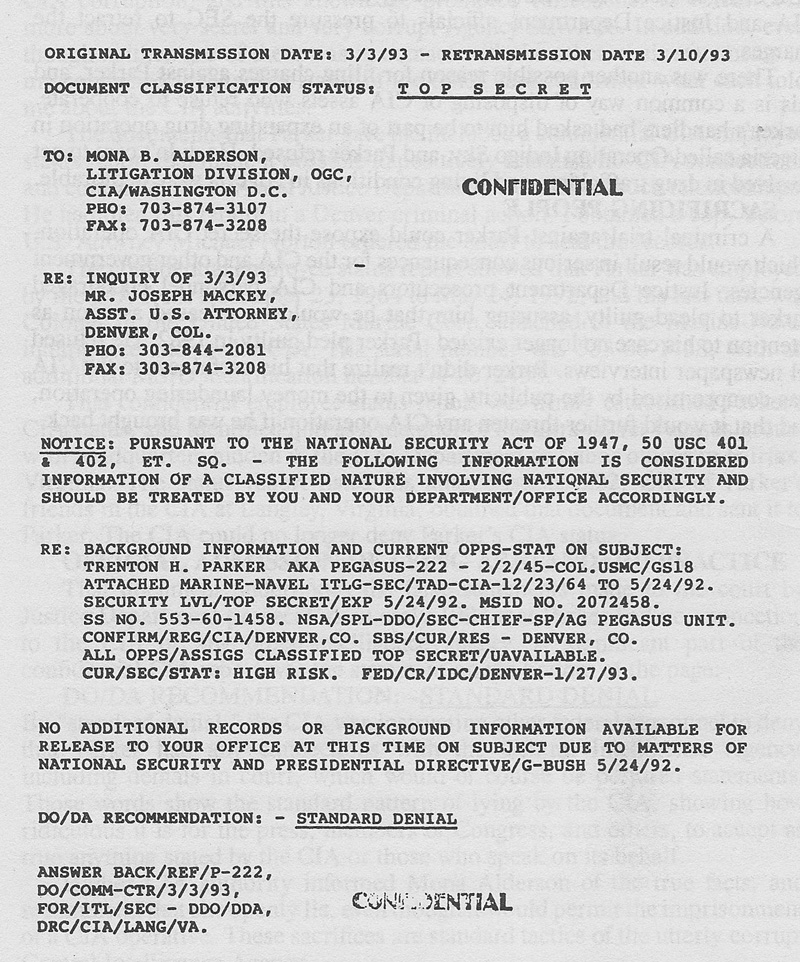
The role of deep-cover CIA officer, Colonel Trenton Parker, has been described in earlier pages, and his function in the CIA’s counter-intelligence unit, Pegasus. Parker had stated to me earlier that a CIA faction was responsible for the murder of JFK, and that Kennedy was advised three weeks before the assassination of a plan to assassinate him in one of three cities that Kennedy would be visiting.
During an August 21, 1993 conversation, in response to my questions, Parker stated that his Pegasus group had tape recordings of plans to assassinate Kennedy. I asked him “what group were these tapes identifying?” Parker replied: “Rockefeller, Allen Dulles, Johnson of Texas, George Bush, and J. Edgar Hoover.” I asked, “What was the nature of the conversations on these tapes?” [emphasis added]
I don’t have the tapes now, because all the tape recordings were turned over to [Congressman] Larry McDonald. But I listened to the tape recordings and there were conversations between Rockefeller, [J. Edgar} Hoover, where Rockefeller asks, “Are we going to have any problems?” And he said, “No, we aren’t going to have any problems. I checked with Dulles. Lf they do their job we’ll do our job.” There are a whole bunch of tapes, because Hoover didn’t realize that his phone has been tapped.
Parker had earlier stated to me that he turned over a full box of files and tapes, documentation, and micro-fiche, for the Pegasus Caribbean operation, to Congressman McDonald, shortly before the Congressman boarded the ill-fated Korean Airlines Flight 007 that was shot down by the Russians.
The November 1993 issue of Penthouse magazine had an in-depth article on Parker, in which federal agents sought to frame Parker and charge him with money-laundering. Parker had recognized one of the agents, and converted the Justice Department’s scheme into a reverse-sting operation against them, using the techniques taught to him by the CIA. The government agents lost tens of thousands of dollars, not knowing that they had been recognized by Parker and were being taken.
Justice Department prosecutors were unaware of what had occurred, and charged Parker with money laundering. These federal charges were later dropped (in mid-1993) when Parker produced evidence that he was a member of the Office of Naval Intelligence and the CIA.
One last little tidbit, from an online article by Jim Hougan, about the Yeoman Charles Radford and Admiral Thomas Moorer spy affair that was happening during Nixon’s presidency:
According to Radford, whom I interviewed many years ago, his “superiors” believed that Kissinger’s foreign policy was “catastrophic” by design. His own espionage activities, Radford insisted, were intended to defeat a conspiracy conceived by “the Rockefeller family” and orchestrated by the Council on Foreign Relations. The purpose of this supposed conspiracy, according to Radford, was to win the Soviets’ cooperation in guaranteeing the Rockefellers’ “continued domination” over the world’s currencies. In return for this, Nixon and Kissinger were to construct a foreign policy that would ensure Soviet hegemony and a one-world government.
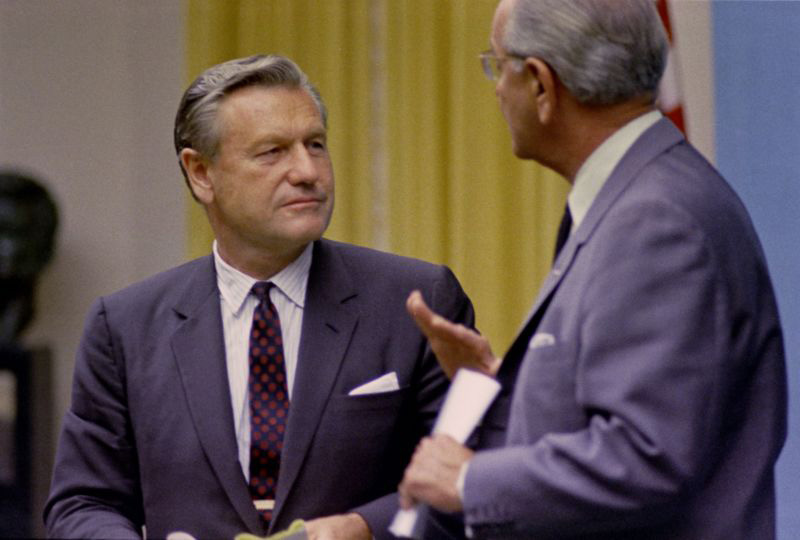
to be continued…
Watergate Exposed: How the President of the United States and the Watergate Burglars Were Set Up (as told to Douglas Caddy, original attorney for the Watergate Seven), by Robert Merritt is available at TrineDay, Amazon, Barnes & Noble, The Book Depository, and Books-a-Million.





